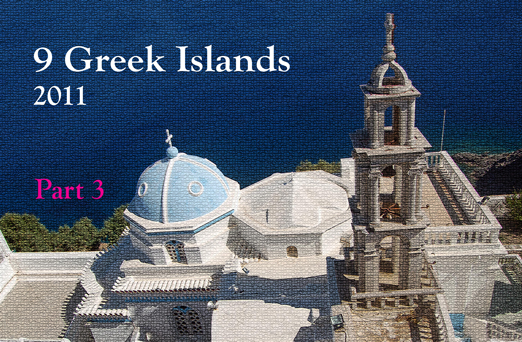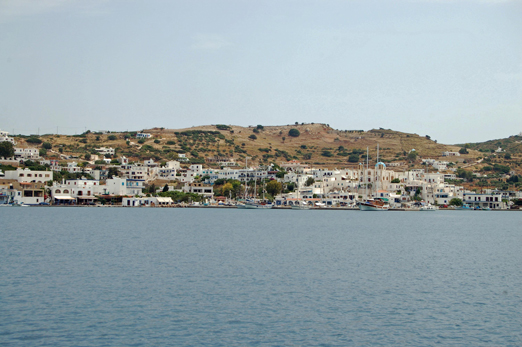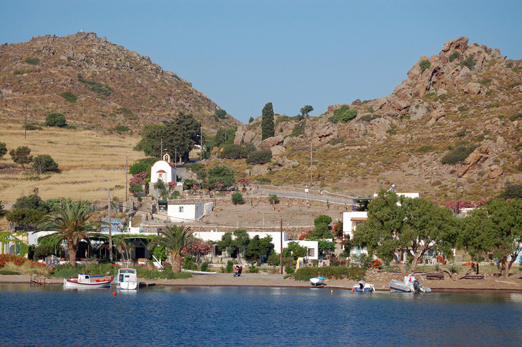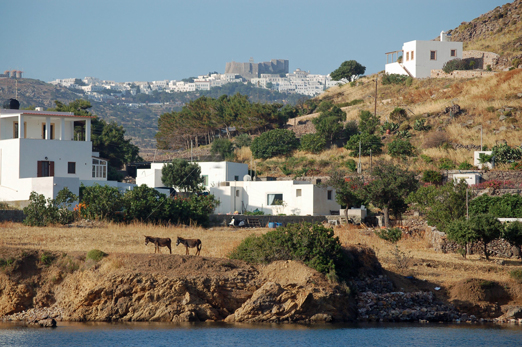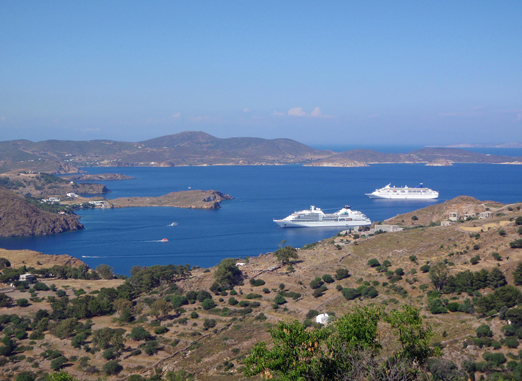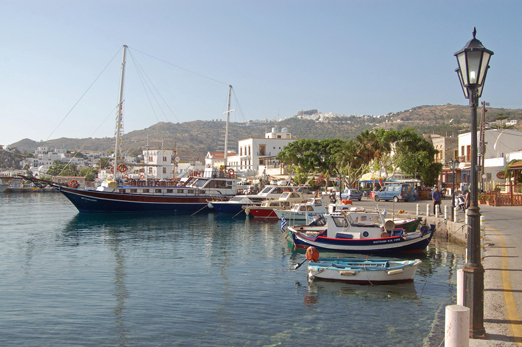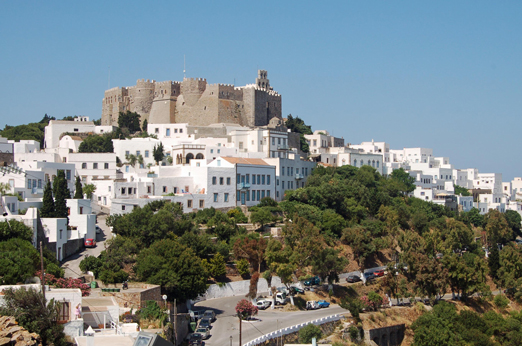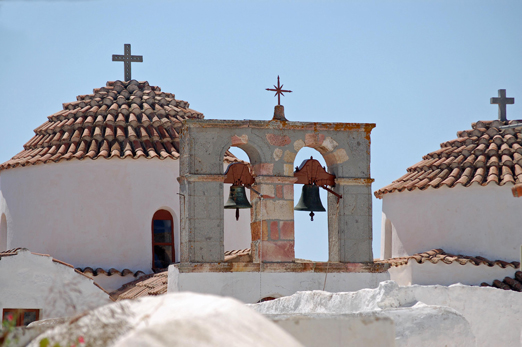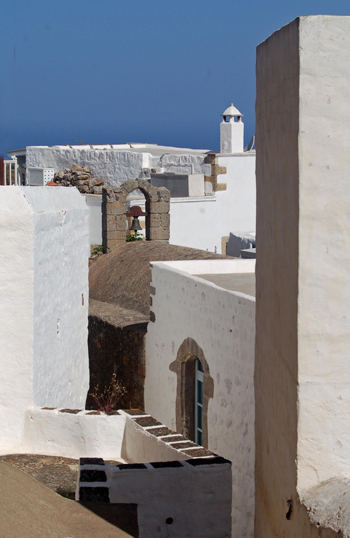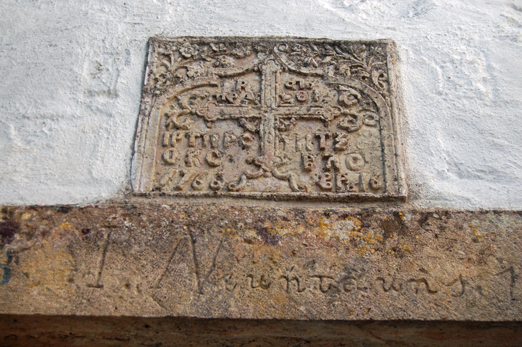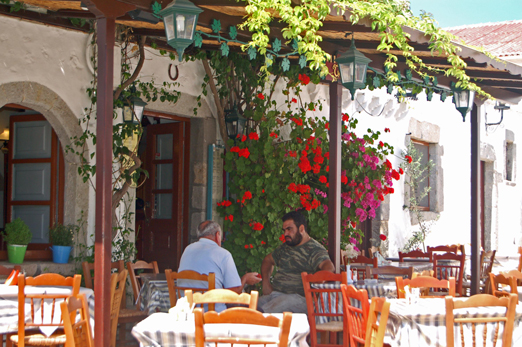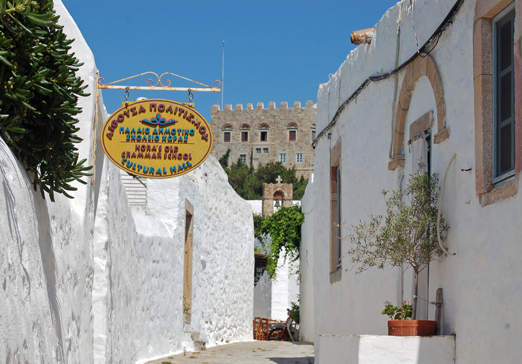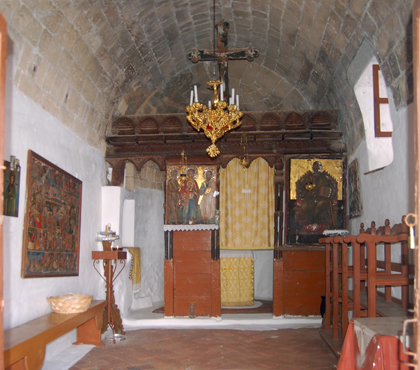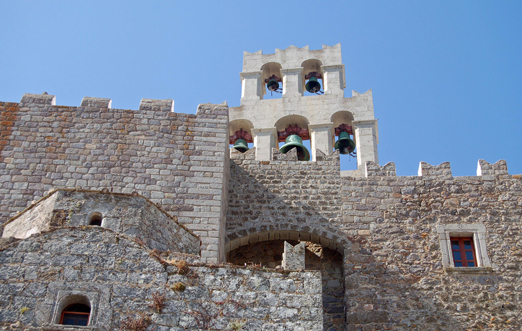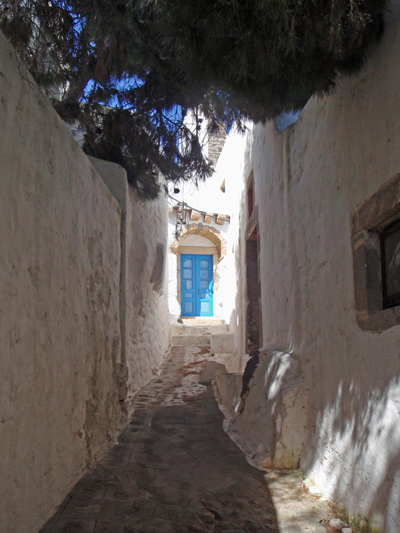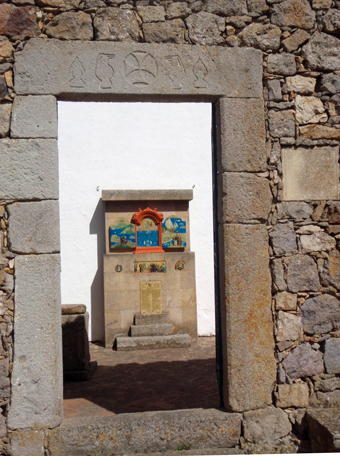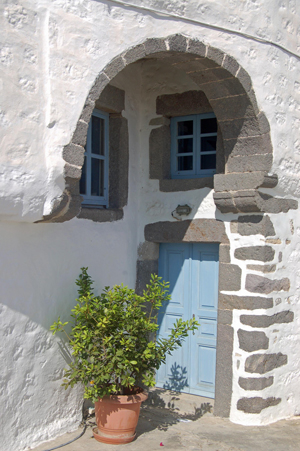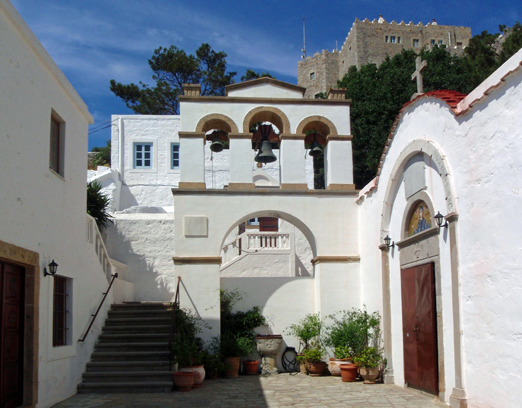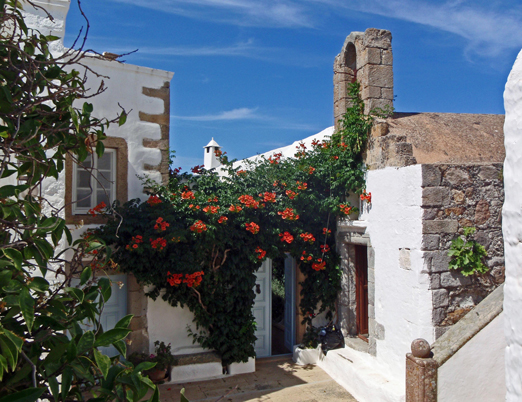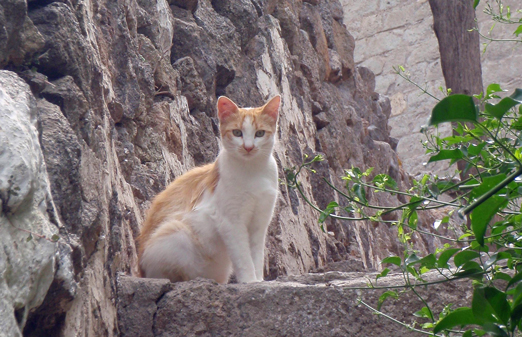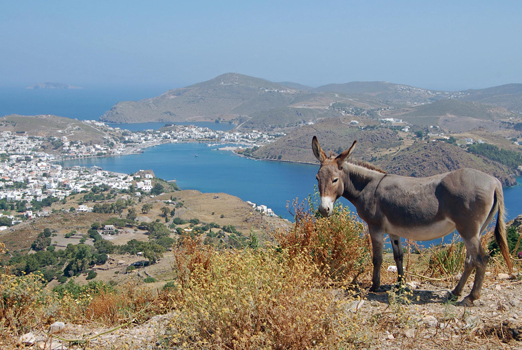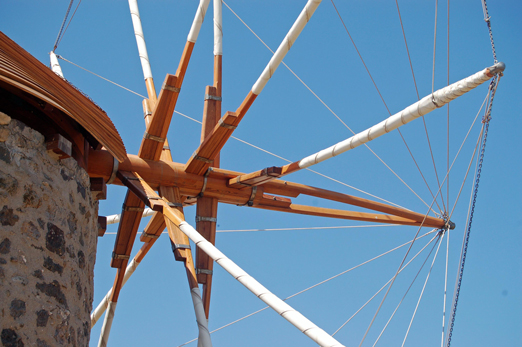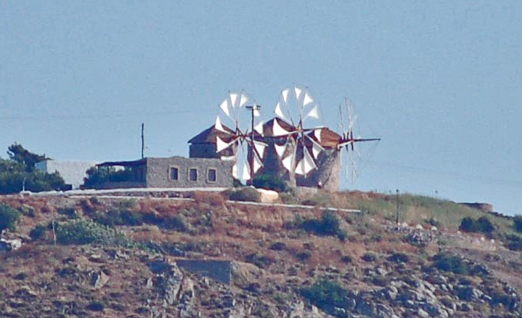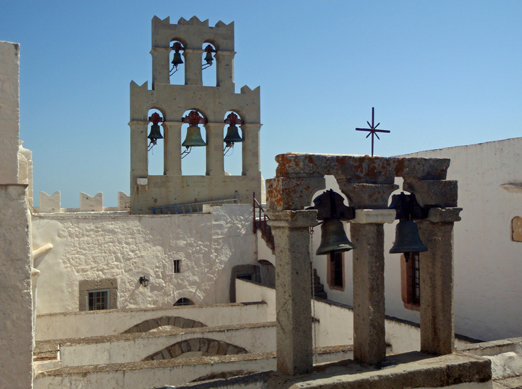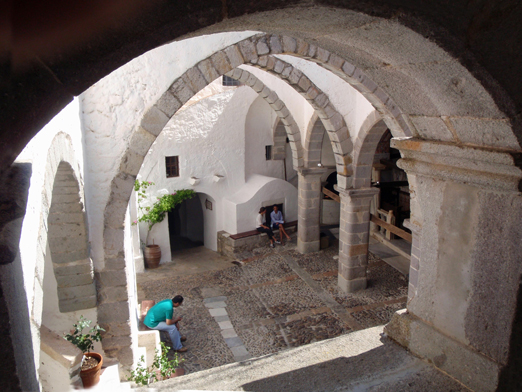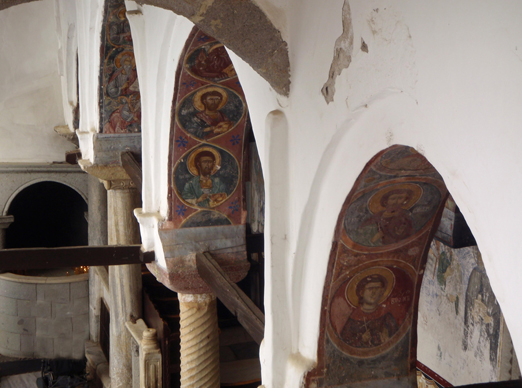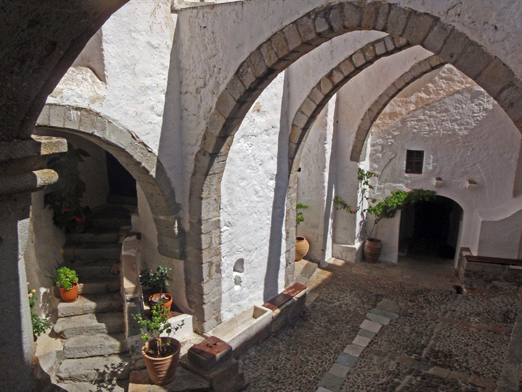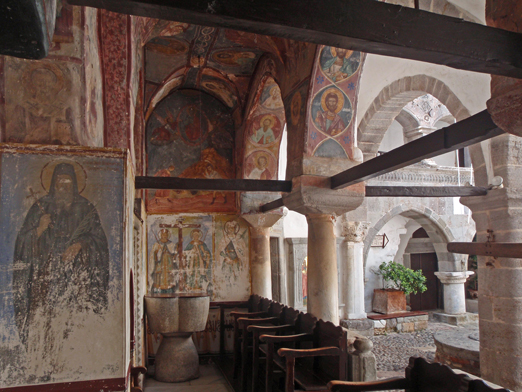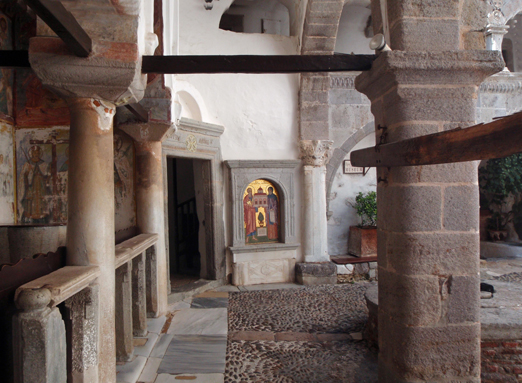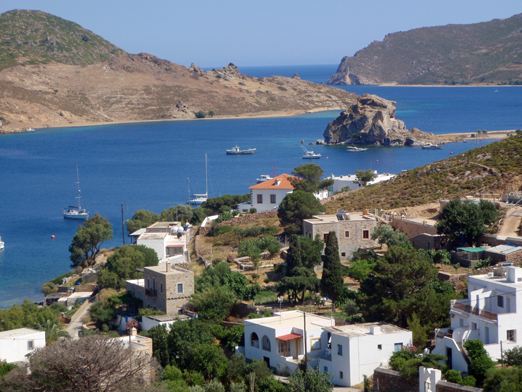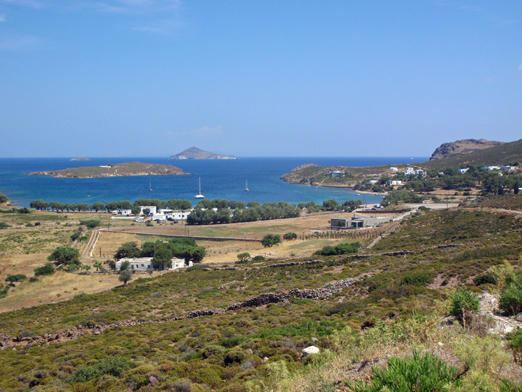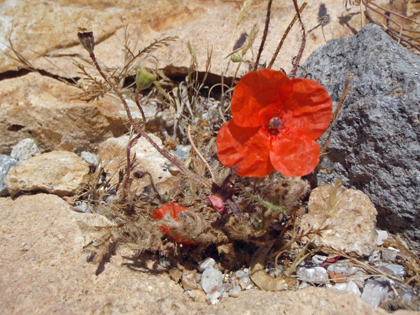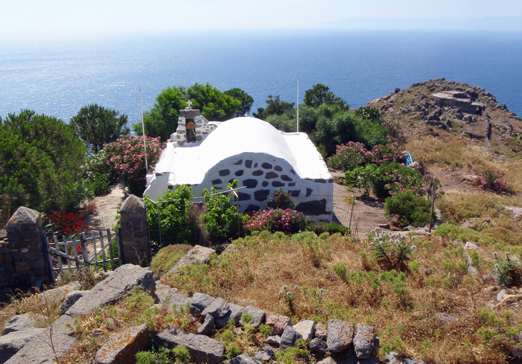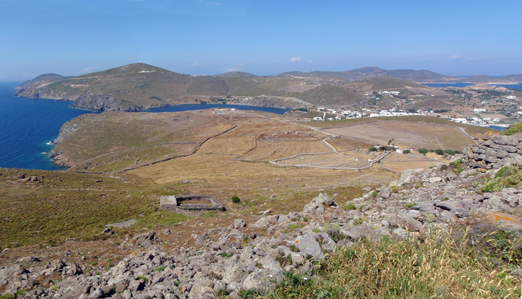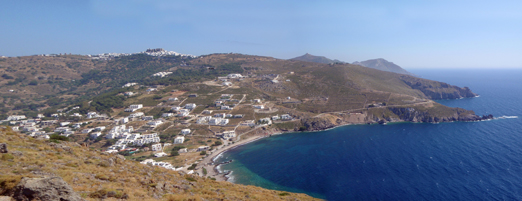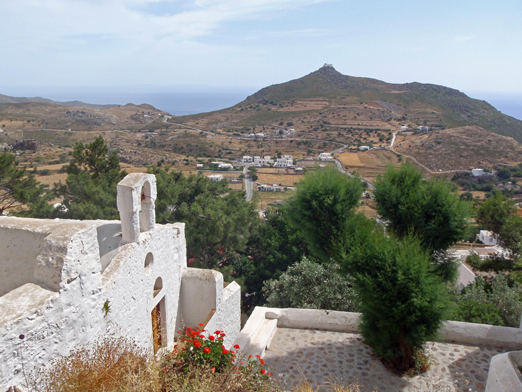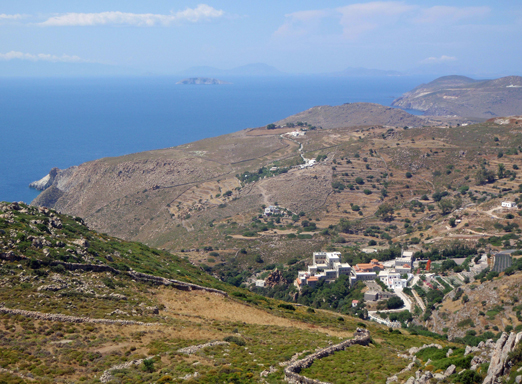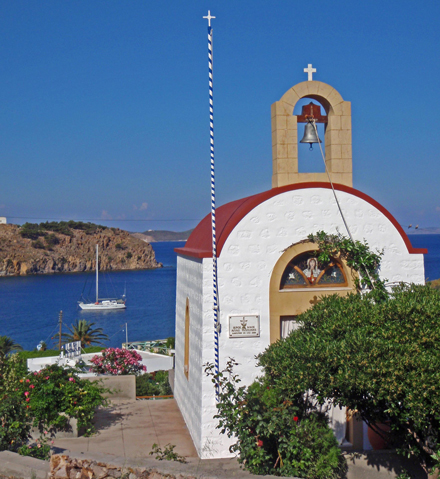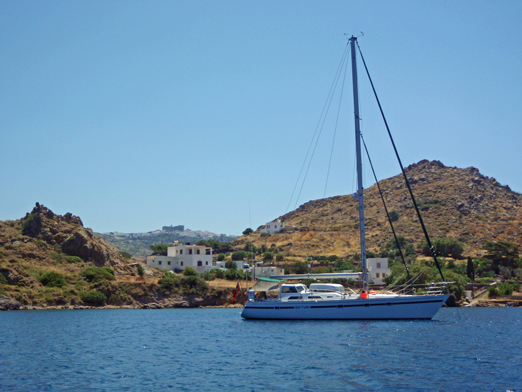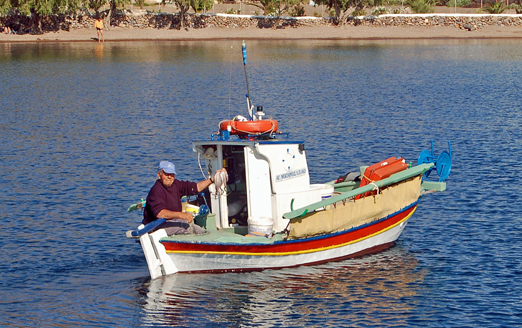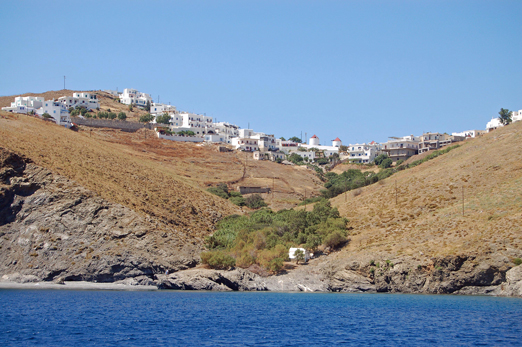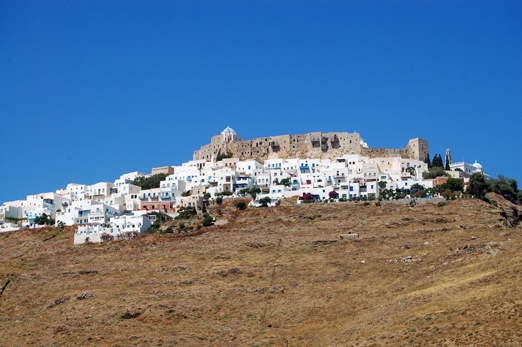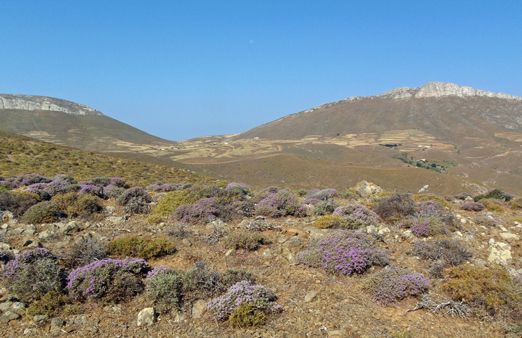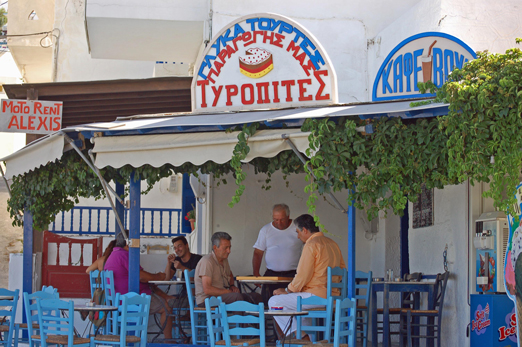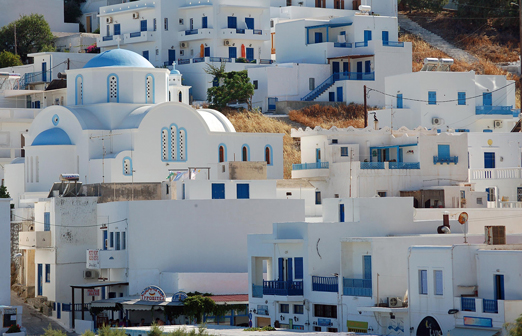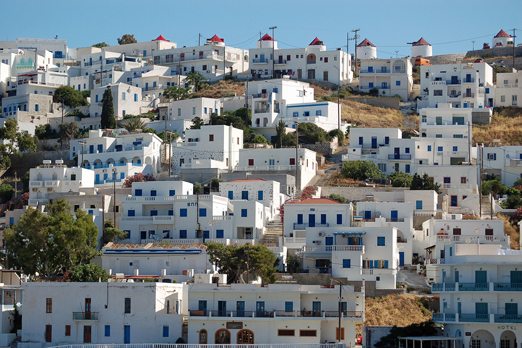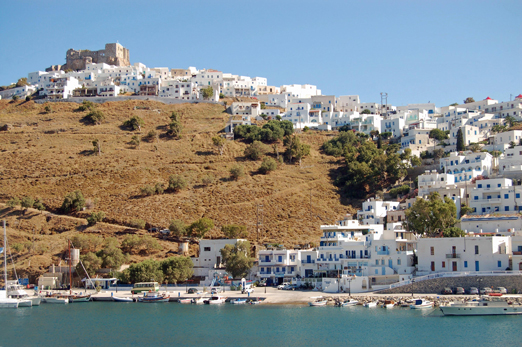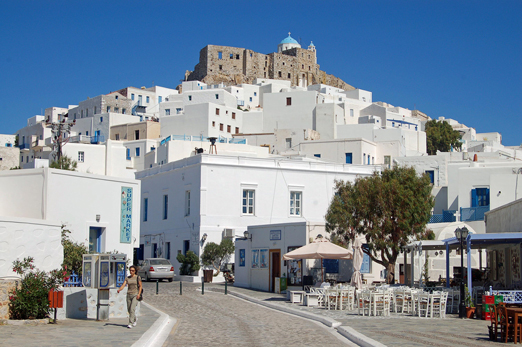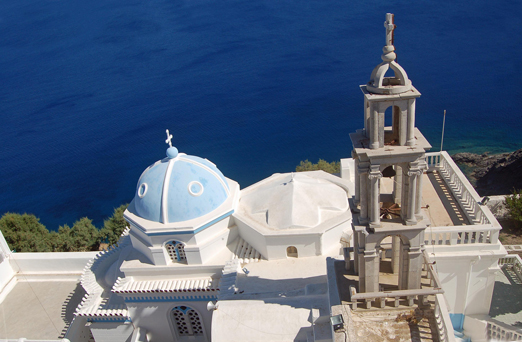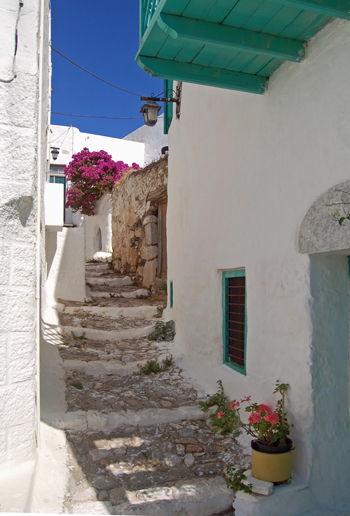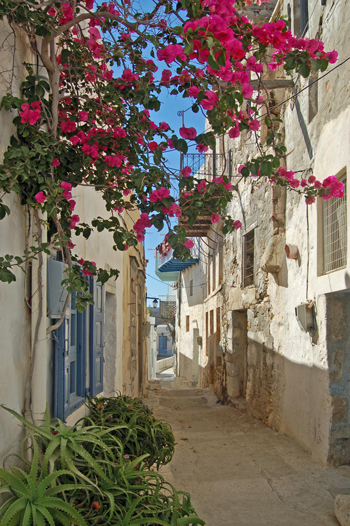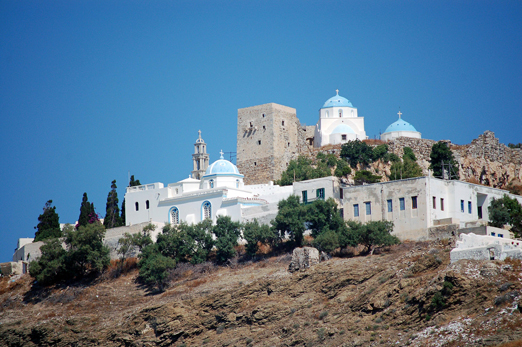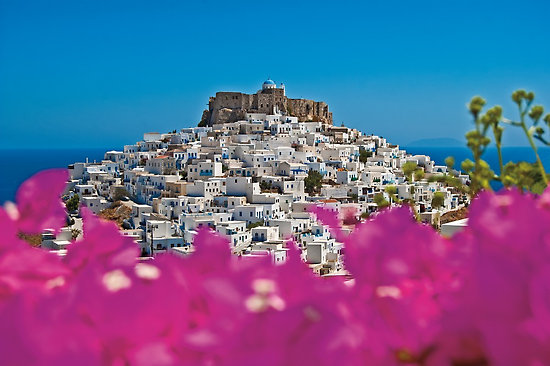We stopped only overnight at Lipsi…
…it was a pleasant, blue water/white sand, sheltered, but busy, anchorage, there wasn’t much to keep us there. It was a call on our way to Patmos, the island we were really wanting to get to and before the forecast wind the following day.
Patmos
From a distance, Patmos Island appeared snow-capped, but as we drew closer, we found that to be the white-washed town of Chora, surrounding the monastery on the hill.
We anchored in the bay off Meloi Beach, next over from the main town of Skala, but over which we still had a view (and over donkeys) to the monastery and Horio.
Patmos is one of the better Greek Islands, a beautiful place and on the regular tourist circuit with many cruise ship visits, but still manages not to be spoiled.
Patmos is a place of great religious significance to the Greek Orthodox Church, but of relevance to all Western Christianity.
It is there that John (although there is some doubt about which John) is said to have lived in a cave and written the book of Revelation after a heavenly visitation.
The ‘Cave of the Acopalypse’ is half way up the hill to Chora where the monastery of ‘St John the Divine’ stands.
The whole hill is now a World Heritage Site and the reason for many thousands of pilgrims to visit, by cruise ship or inter-island ferry.
The town of Scala is the port and is a busy tourist town with all the usual tourist amenities to find, but as most visitors come by cruise ship, there are no major hotels. For its popularity, development is relatively low-key, it stays attractive, -and we found good food….
Most visitors are bussed straight up the hill to the monastery and the cave, it’s busy then, but between cruise ships,it is quiet. There is a pleasant (if hot) walk along the old cobbled cart track diagonally up the hill to the town of Chora.
That town is just irresistible, it fringes the monastery, it demands exploring first, -although few people visiting the monastery do!
The near deserted steps and alleys are a white-washed maze of 16th and 17th century houses. Around every corner is something new, views out, mini-scenes, micro-scenes, so much in so small area, the knees get a work-out on the stairs and the camera suffers overuse!
There are people living here, but not in the streets, they can be held murmuring behind half-open doors and windows, apart from the occasional ‘Choran’ stepping out on some errand, the footpaths are left to the cats, -there are many…
The little town is intriguing, the 360 views around it impressive
but especially eye-catching is the set of very well preserved windmills.
Sadly, like Quo Vadis, they’re most of the time without sail, except briefly, when we saw them working the breeze from a long way away!
The monastery like the town, deserved a visit on more than one occasion, but best to choose a quiet time and avoid the crowds.
It is still a functioning monastery with resident monks and religious instruction, so little of it is open to the public, and in the more sacred parts we are allowed (understandably in the light of visitor numbers), photography is prohibited, -as also are eating, drinking, cell-phones and short skirts!
In the main, vaulted courtyard, of frescoed columns and cool shady corners, it is a wonderful atmosphere where one whispers and avoids eye-contact with the black cloaked and pill-box hatted monks who are furtively about their business.
We enjoyed almost daily monastery visits, but there was more to walk about and see on the island too.
Despite the dryness and lack of trees, it has its pretty bits…
The ruined acropolis is on the hill above Scala, there’s little left of it now, some rows of rocks where once there were houses and fortifications, a small chapel
and as expected when it was a strategic defence, more expansive views over the town.
The highest point on the island is Mt Profitis Ilias, it has its own little chapel at the summit,
and views down over the convent below
Greeks in the past have needed little excuse to build a church, there are ‘pocket-chapels’ all over, in any place of any religious significance, not neccessarily in settlements. They’re only big enough to hold a hand-full of worshippers and the door usually unlocked even now.
They’re mostly along similar lines and no matter how small, they are no crude shrine, having sanctuary, screen, candles, hand painted icons and often painstakingly carved woodwork.
We greatly enjoyed our anchorage in Meloi for a week or so, close enough, but sufficiently apart from the bustle of the near daily cruise ship visits in Skala.
Few people made it over the hill into ‘our’ bay without good reason and our presence seemed to deter most other yachts from visiting too(!).
We could easily still be there now, -if we hadn’t the unfortunate commitment to move on!
Arki and Agathonisi
It was a good sail to the east, we passed through the small island group of Arki, noting that the although the land was low, there were several small, sheltered coves with clear blue water to return to, -later.
Instead of stopping as we should have, we carried on to Agathonisi and were disappointed! The anchorage we chose was uninteresting and unpredictable with little room for the yachts who came after.
Over the hill the small town was pretty, but uninspiring.
We stayed only one night and went back to Alinda in Leros, where we waited briefly for the wind to take us east to Astypalea.
Astypalea
This proved for us to be another gem island!
It had been a great sail across with the wind on the quarter. It was day like this that despite the sometimes little difficulties, made us realise we have come to enjoy sailing here in the Mediterranean!
We went on past the main port town of Skala, the castle and town on the hill above it, Hora, and anchored off a sandy beach in a wide bay of Livadia.
Even for a Greek Island, Astypalea is a dry and abrren place, almost completely treeless.
The rocky hills are covered with wild thyme and grazed by hardy sheep and goats.
The good news about it too is that there is essentially no foreign tourism, it is out of range of most charter yachts, but the Greeks descend in droves for the summer.
It is still Greek.
The blue and white of the cubic houses in the town say it all, these are the shades of the national colours.
There is the small town of Skala around the port
and as seems to be the Greek way, merging with a town of Hora around a 14th century castle on the top.
Like other Horas we have found, it is dazzling bright with whitewash
and with wonderful alleys to get lost in.
the castle was lived in until as recently as 1953, but was then badly damaged by earthquake. since then the ruins have been partially opened to the public.
It was with some reluctance that we had to leave Astypalea with a promise to return some other time, but there were big winds forecast (a Meltemi). Out there, in the middle of the Aegian, it would be very exposed, we didn’t want to get caught. Instead, we had another magnificent day sail, -the sort that makes it all worthwhile, -back to Kamari in Kos, then on the next, more good sailing to Symi, backing our tracks to clear once more out of Greece to Datca.
The meltemi gales came and went,it was quiet in Datca. Then there was another gale warning, we moved to shelter in Keci Buku at the head of the Gulf of Hisaronu, (in ancient times, perhaps appropriately, the ‘Gulf of Doris’???)
There is great protection in a pinetree lined bay, we enjoyed it immensely and have returned subsequently.
With a break in the gales, they reduced to be just a windy day, we had an excellent downwind sail all the way to Fethiye, anchoring in the harbour.
2 days later we motored across to Gocek where we parked Quo Vadis in the Turk Marin marina, we had taken a 2 month contract to rest up over the really busy, peak summer months in Turkey and to enable returning to NZ for work…but that’s all in the next posting.
